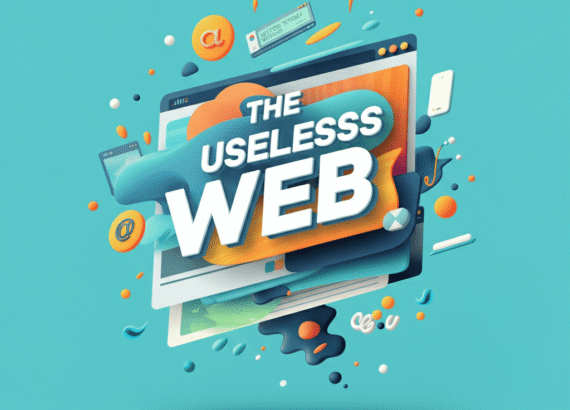From Zero to Hero: Unleash Your Potential with Website Development for Beginners
Website development has become a valuable skill set that enables individuals to unleash their potential and create impactful websites from scratch. This article serves as a comprehensive guide for beginners, empowering them to dive into the world of website development confidently.
Whether you’re a creative professional looking to showcase your portfolio, an entrepreneur aiming to establish an online business, or simply someone passionate about technology, learning website development will equip you with the tools and knowledge to bring your ideas to life. By understanding the basics, setting up the right development environment, and exploring the building blocks of web development, you can pave your way from zero to hero in the exciting realm of website development.
1. Introduction: The Power of Website Development for Beginners
Why Learn Website Development?
So, you’re thinking about diving into the world of website development? Excellent choice, my friend. Let me tell you why learning website development is like unleashing a superpower. In this digital era, having the ability to build websites opens up a whole new world of opportunities. Whether you want to create your website, start a freelance gig, or even pursue a career in web development, the possibilities are endless.
The Benefits of Being a Beginner
Now, here’s the secret sauce: being a beginner has its perks. As a beginner, you get to approach website development with fresh eyes and an eagerness to learn. You’re not burdened by the weight of experience or preconceived notions. Plus, you’ll uncover a whole community of like-minded beginners who are just as excited as you are. So, embrace your beginner status, my friend, because it’s the perfect time to embark on this rewarding journey.
2. Understanding the Basics: Key Concepts and Terminology
Introduction to Web Development
First things first, let’s get acquainted with the wonderful world of web development. Web development encompasses everything involved in creating and maintaining websites. From the visual design and user experience to the behind-the-scenes coding magic, web development brings it all together like a digital symphony.
Common Web Development Terminology
Now, let’s talk lingo. Just like any other field, web development has its own set of jargon. We’ll demystify terms like HTML, CSS, JavaScript, and more. Before you know it, you’ll be slinging around technical jargon like a pro.
3. Setting up Your Development Environment: Tools and Resources
Choosing the Right Development Environment
Before we dive into the fun stuff, let’s make sure you’re equipped with the right tools. Choosing the right development environment is like finding the perfect pair of shoes – it needs to be comfortable and tailored to your needs. We’ll explore different options and help you find the one that suits you best.
Essential Tools for Website Development
Now that you have your development environment sorted, it’s time to arm yourself with the essential tools for website development. We’ll introduce you to the must-haves, from code editors to browser extensions, that will make your coding journey a breeze. Get ready to assemble your web development arsenal!
Useful Online Resources and Communities
When embarking on a new venture, it’s always helpful to have a support network. In the world of web development, there are countless online resources and communities just waiting to lend a helping hand. We’ll point you in the direction of some of the best forums, tutorials, and communities out there, where you can connect with fellow developers and get answers to all your burning questions.
4. Building Blocks of a Website: HTML and CSS Fundamentals
Introduction to HTML
Now, it’s time to roll up your sleeves and get your hands dirty with some code. We’ll start with HTML, the backbone of every website. Think of it as the blueprint that structures and organizes the content of your web pages. Don’t worry if you’ve never written a line of code before – we’ll guide you through the basics and get you up to speed in no time.
Once you’re familiar with HTML, it’s time to meet its stylish counterpart – CSS. Cascading Style Sheets (CSS) is what brings life to your website. It’s the magic that makes your web pages look beautiful and captivating. We’ll delve into the world of CSS and show you how to add colours, styles, and layouts to your web pages like a seasoned designer.
HTML Tags and Structure
Let’s dive deeper into HTML and explore the various tags and elements at your disposal. We’ll cover the essentials like headings, paragraphs, images, links, and more. With a solid understanding of HTML tags and structure, you’ll be able to create well-organized and semantic web pages like a pro.

Styling Your Website with CSS
Now that you have a grasp of CSS, it’s time to flex your design muscles. We’ll show you how to add that extra oomph to your web pages with CSS. From changing fonts and colours to creating fancy layouts, you’ll learn the tricks of the trade to make your website shine. Get ready to unleash your inner design guru!
So, my web development apprentice, buckle up and get ready for an exciting journey. Soon enough, you’ll be creating websites that will make people go, “Wow, you built that?!” Let’s take you from zero to hero in the world of website development!
5. Bringing Functionality to Your Site: Introduction to JavaScript
JavaScript is like the secret sauce that brings your website to life. It’s a programming language that allows you to add interactivity and functionality to your web pages. From creating dynamic forms to handling user interactions, JavaScript is a must-know for any aspiring web developer.
Basic JavaScript Syntax and Concepts
Before diving into JavaScript, it’s important to understand the basics. JavaScript syntax is similar to other programming languages, but don’t worry, it’s not as intimidating as it seems. You’ll learn about variables, data types, conditionals, loops, and more. Trust me, once you get the hang of it, you’ll be slinging JavaScript like a pro.
Working with Variables and Functions
Variables hold data that can be manipulated or accessed later, while functions are reusable blocks of code that perform specific tasks. Together, they allow you to create powerful and efficient scripts. Get ready to declare some variables and write some functions that will make your website shine.
Manipulating the DOM with JavaScript
With JavaScript, you can access and modify the DOM to create dynamic and interactive websites. JavaScript can make it happen. You’ll learn how to traverse the DOM, manipulate elements, handle events, and make your website truly come alive.
6. Designing an Engaging User Experience: User Interface and User Experience (UI/UX) Principles
Understanding UI/UX and Its Importance
UI/UX might sound like a fancy designer term, but it’s all about creating a delightful and intuitive experience for your website visitors. User Interface (UI) focuses on the visual and interactive elements, while User Experience (UX) considers the overall feel and ease of use. Together, they make your website a joy to navigate.
Creating a User-Friendly Website
A user-friendly website is like a warm hug for your visitors. You want to make sure everything is easy to find, buttons are clickable, and forms are a breeze to fill out. We’ll explore navigation design, responsive layouts, and accessibility considerations to ensure your website is a pleasure to use for everyone.
Design Principles and Best Practices
Good design can make or break a website. We’ll dive into the principles of design, such as colour theory, typography, and layout, to help you create visually appealing and balanced web pages. Plus, we’ll discuss best practices for creating intuitive user interfaces that make your website a joy to explore.
Usability Testing and Feedback
Once you’ve designed your website, it’s time to put it to the test. We’ll explore usability testing techniques and how to gather feedback from real users. By observing how people interact with your site and listening to their thoughts, you can uncover areas for improvement and make your website even more user-friendly.
7. Launching Your Website: Hosting, Domain Names, and Deployment
Choosing the Right Web Hosting Provider
Before your website can go live, you need to find a web hosting provider that will keep it up and running. We’ll cover the factors to consider when choosing a hosting provider, such as performance, reliability, and customer support. Don’t worry, we’ll help you steer clear of the landmines and find the perfect match for your website.
Registering a Domain Name
Every website needs a snazzy domain name, like www.awesome.com. We’ll walk you through the process of registering a domain name that reflects your branding and makes your website easy to find. Plus, we’ll share some tips to avoid common pitfalls and ensure your domain name is memorable and catchy.
Deploying Your Website to a Live Server
It’s showtime! We’ll guide you through the process of deploying your website to a live server, making it accessible to the world. From transferring files to configuring server settings, you’ll learn how to navigate the technical side of launching your site. Get ready to take a bow as your website goes live.
Testing and Ensuring Website Accessibility
Before you unleash your website on the world, it’s crucial to test its functionality and accessibility. We’ll show you how to run tests to catch any bugs or errors and make sure your website works flawlessly across different devices and browsers. Accessibility is also a top priority, so we’ll cover techniques to ensure everyone can access and use your website, regardless of disabilities.
The time it takes to become proficient in website development varies depending on various factors, such as the amount of time dedicated to learning, prior coding experience, and the complexity of projects undertaken. While some individuals may grasp the basics and build simple websites in a matter of weeks or months, it is important to remember that website development is a continuous learning process. Ongoing practice, exploration of advanced concepts, and real-world project experience are crucial for continual growth as a website developer.
8. Expanding Your Skills: Next Steps in Website Development and Continuous Learning
Exploring Advanced Web Development Concepts
Congrats on making it this far! We’ll explore advanced web development concepts, such as server-side scripting, databases, and frameworks. These techniques will empower you to create more complex and robust websites and open up new opportunities in the world of web development.
Specializing in Front-End or Back-End Development
As you continue your web development journey, you’ll find that there are different paths to take. One option is specializing in front-end development, where you focus on the visual elements and user experience. Another option is diving into back-end development, where you handle the server-side logic and database interactions. We’ll discuss the pros and cons of both paths to help you decide which is the best fit for you.
Continuing Education and Resources for Growth
Web development is a constantly evolving field, so continuous learning is key. We’ll share resources, courses, and communities where you can further develop your skills and stay up-to-date with the latest trends and technologies. Whether it’s online tutorials, workshops, or joining a coding group, there are plenty of opportunities to keep growing as a web developer. So grab your learning cape and get ready for a lifelong adventure in website development!
As you conclude this journey from zero to hero in website development, remember that it is a constantly evolving field. The skills and knowledge you have gained as a beginner are just the starting point. Keep exploring, experimenting, and honing your craft to stay ahead in this dynamic industry. With dedication, practice, and a passion for learning, you can continue to unleash your potential and create remarkable websites that leave a lasting impact. So go forth, embrace the opportunities that website development offers, and let your creativity and skills shine.
FAQ
1. Is prior coding experience required to learn website development as a beginner?
No, prior coding experience is not required to learn website development as a beginner. This article is designed to provide a comprehensive guide for beginners, covering the fundamental concepts and tools necessary to get started in website development. With dedication and practice, anyone can learn and master the art of website development, regardless of their coding background.
2. What are the essential tools needed for website development?
Some essential tools needed for website development include a code editor (such as Visual Studio Code or Sublime Text), web browsers for testing (like Google Chrome or Mozilla Firefox), and a version control system (such as Git). Additionally, familiarity with developer tools provided by web browsers can greatly enhance the development process. Many of these tools are free and readily available for download.
3. Are there online resources available to support continued learning in website development?
Absolutely! The online world offers a wealth of resources to support continued learning in website development. Online learning platforms like Udemy, Coursera, and Codecademy offer courses and tutorials specifically tailored for beginners. Furthermore, developer communities, forums, and blogs provide valuable insights, tips, and troubleshooting assistance. It is highly recommended to join these communities and engage with fellow developers to stay updated and foster continuous learning.
Thank you for reading 🙂
Get up to 70% Discount on Amazon Electronic Products
If you want to build your website at an affordable price contact: www.nextr.in
Read this: Top 8 Apps Every Entrepreneur Needs
















